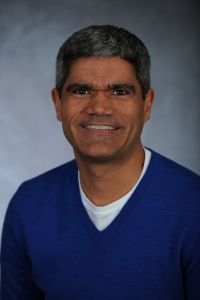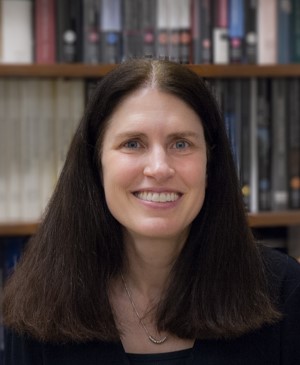
Greg Buonaccorsi
There’s a lot more that goes on at a Dodgers game than Clayton Kershaw striking out batters or employees serving hot dogs to spectators. Behind the scenes lies an intricate operation comprised of hard-working, innovative individuals collaborating to put on the experience millions of fans adore. Greg Buonaccorsi lives out this dream by merging his love for sports with his interest in business, a marriage of passions that began long ago.
Greg did not originally envision himself being admitted to UCLA, much less attending. But as an avid sports fan and enthused student, he couldn’t resist the possibility of contributing to the university’s athletic program while simultaneously learning from influential professors teeming with insights. The school’s pallet of prestigious athletics coupled with its academic reputation made Westwood the perfect fit for him.
For Greg, reinforcing his passion for business stemmed from interacting with a variety of different fields, as he dabbled with architecture and engineering before concentrating on his aptitude for business. He then enrolled at UCLA as a business economics major, an area of study that he felt “had a perfect marriage between the practicality on the business side, and the critical thinking on the economics side.”
Coming from a small hometown, Greg sought out numerous avenues of support to adjust to the vastness of UCLA, and found a home in the basketball program built by Coach John Wooden. Having arrived in Westwood after supervising his high school basketball team’s operations, he marketed his managerial experience to obtain a position in college basketball’s most storied program. He acted as a manager for all four of his years at UCLA, and served as head student manager in the 1994-1995 season, the same year the Bruins emerged victorious to claim their record-setting 11th national title.
“Being part of a program that Coach Wooden created was an absolutely phenomenal opportunity. A few months before season, I’m in my hometown. The next thing I know, I’m in Pauley Pavilion looking up at national championship banners.”
In addition to the unforgettable experiences Greg accumulated through the basketball program, he also absorbed valuable skills in the classroom that would serve him for the rest of his life. One of Greg’s most memorable teachers, Professor David Ravetch, not only taught him the complexities of accounting, but also inculcated a dynamic approach to learning. Greg quickly discovered that his key to success did not lie merely in his propensity to comprehend the material. He understood the necessity of learning to apply the material to new and challenging situations he had never seen before, a skill that transcended his academic performances at UCLA and permeated into a key tool in his professional endeavors.
Upon graduating from UCLA in 1995 with a bachelor’s degree in business economics, Buonaccorsi integrated his education with his passion for sports and sought out a position at accounting firm Ernst & Young, who at the time audited professional sports organizations such as the Los Angeles Clippers. Working on the Clippers engagement allowed Greg to thrive under the mentorship of Anderson alumnus Dan Beckerman, whose guidance influenced Buonaccorsi to pursue a graduate education before returning to industry.
Following his graduation from the Darden School of Business at the University of Virginia, Buonaccorsi held positions at venerable institutions such as the New York Times and Warner Brothers. While financial planning for journalists might not have been a perfect marriage of his two passions, he gained valuable experience that proved vital in his return to a competitive sports industry. Greg understood that jobs in sports management have little turnover, and individuals who work such positions generally reap the benefits for as long as they deem reasonable. His largest piece of advice to a prospective sports businessman? “If you’re not able to get into sports immediately, find the best job you can find within your functional area (such as finance), and do the best you can at it.” Buonaccorsi made his return to sports by assuming the position of Director of Financial Planning and Analysis at the Charlotte Bobcats.
After delving back into industry, Greg faced no shortage of challenging professional experiences, but a sense of obligation to his family encouraged him to geographically transition back to the West Coast. In 2014, Buonaccorsi utilized his networking skills to promote himself for a position with the Los Angeles Dodgers, and was subsequently hired to fill an opening in the franchise’s Finance Department. His breadth of work might not be the face of the organization in the same way Clayton Kershaw’s statistics captivate the Dodger faithful, but his collaboration with a vast group of high-achieving individuals proves fundamental to operating a professional sports club that generates hundreds of millions of dollars in revenue. Now serving as a Senior Director, Greg and his team look for ways to expand their operations beyond baseball and often explore worthwhile startup investments, a practice not all franchises undertake.
“We’re always stretching and reaching for those new opportunities,” Greg said. “To be at an organization that doesn’t just think of themselves solely as an MLB franchise, is really interesting.”
Communication skills serve as one of the hallmarks of Greg’s occupation, as a mere understanding of financial analysis does not suffice when conveying complex proposals to employees from the nearly fifty departments he partners with. He says his “soft skills’’ are imperative in assuring that the meticulously-crafted plans of his department are optimally implemented to improve the operations of the franchise.
Now fully immersed in his professional ventures, Buonaccorsi still fondly reflects on his time at UCLA and the gratifying sensation of graduating from an institution he never imagined attending. “If you told me when I was in high school that I would graduate from UCLA…I would have been extremely shocked. Graduating from UCLA was my biggest accomplishment.”
Greg still remains an active Bruin, administering guidance to undergraduate students through the UCLA One program, as he hopes to inspire the next generation of leaders in business and finance. Buonaccorsi notes that the most invaluable piece of wisdom he can express to an aspiring young leader is to “utilize the four years of college to experiment with different ideas and to discover what is most authentic to yourself.” Once that happens, he remarks, it is essential to become a sponge for knowledge, to hone your craft, and become an expert in that field. Doing so, he concludes, will ease the decisions that an individual will come across as she explores her professional path.
By Andreas Papoutsis



 “Kathryn, you’re in!” declared the UCLA admission officer as she immediately recognized the voice on the other side of the phone. Why could an admission officer, who dealt with thousands of students each year, recognize a voice so quickly? It was because she had been receiving daily phone calls from a young Kathryn Brewer, anxious to learn of her admission application status. This kind-of hunger and determination has pushed Kathryn to grow and succeed in her diverse career.
“Kathryn, you’re in!” declared the UCLA admission officer as she immediately recognized the voice on the other side of the phone. Why could an admission officer, who dealt with thousands of students each year, recognize a voice so quickly? It was because she had been receiving daily phone calls from a young Kathryn Brewer, anxious to learn of her admission application status. This kind-of hunger and determination has pushed Kathryn to grow and succeed in her diverse career.
